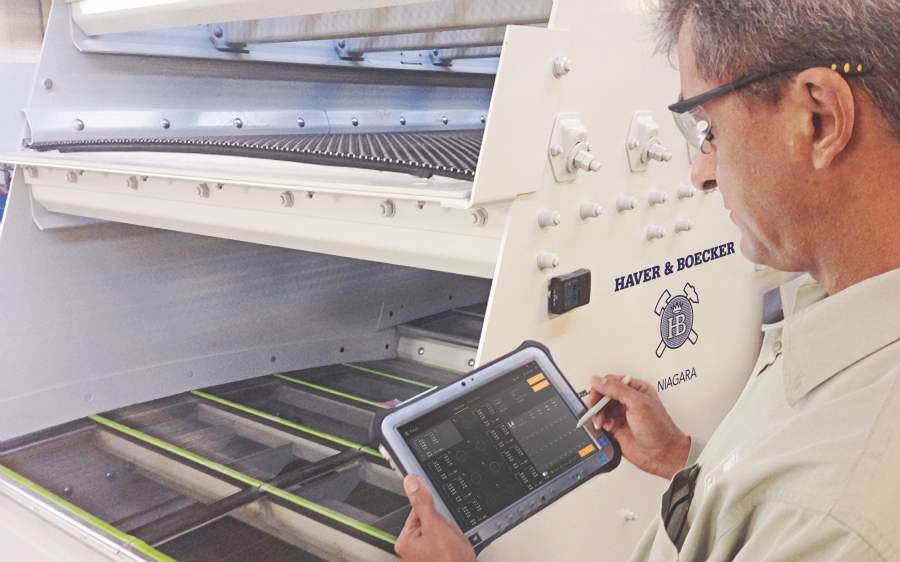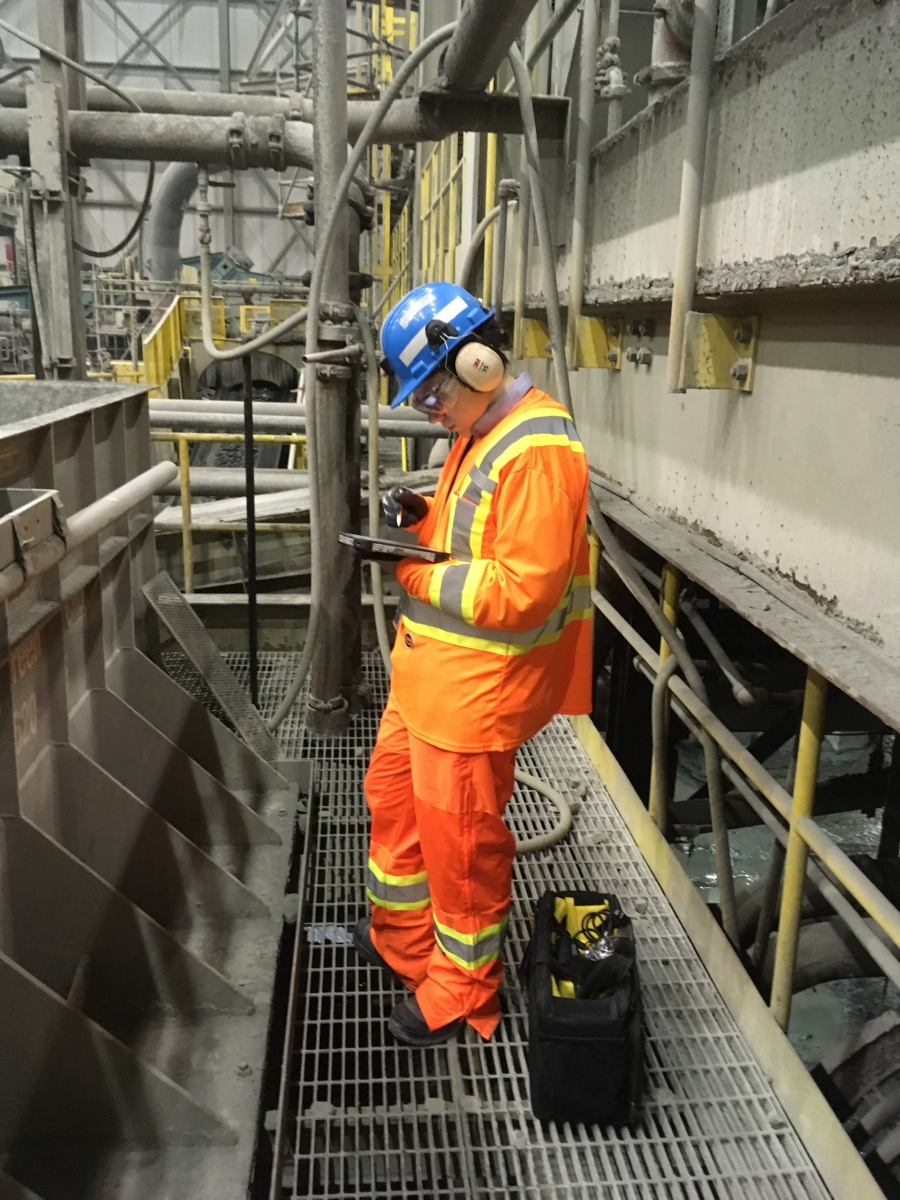

By Karen Thompson, President of Haver & Boecker Niagara’s North American and Australian Operation
It’s an industry thousands of years old, with the same materials and same uses today as then. Refining and producing aggregate dates to the Roman Empire, where it was used to establish a network of roads and massive aqueducts. While the purpose of aggregates remains relatively unchanged, manufacturers continue to innovate, developing methods of production the Romans would have only dreamed about.
But, just like the Romans, modern manufacturers continually seek ways to do things better and faster. Producers are striving to say goodbye to downtime and hello to new innovations.
To get the most out of equipment and lessen downtime, consider a few key strategies: a vibration analysis system, a comprehensive service program, and proper screen selection and installation.
Good Vibrations
To start, look for a vibration analysis system designed specifically for vibrating screens. This offers aggregate and mining operations a way to safely monitor their screens’ performance in real-time. Some systems also detect irregularities before they lead to diminished performance, decreased efficiency, and increased operating costs. A short halt in production to fix a minor irregularity requires little downtime. And fixing minor irregularities before they become major repairs requires the least amount of downtime and labor costs.
The vibration analysis system should have eight triaxial sensors, which attach to key places on the equipment. From there, the sensors transmit 24 channels of data to a heavy-duty tablet, which then illustrates the machine’s orbit, acceleration, and deviations. Look for a system that provides a variety of reports on the machine’s performance. An orbit report illustrates the machine’s orbit and waveform, as well as data about acceleration, stroke, speed, and phase angle. A tuning report concludes deviations between measurement points while providing recommendations on balance, acceleration, stroke, and speed. Each tuning report provides producers with feed and discharge analyses as well as diagonal measurements. The variety of data paints a detailed picture of exactly what’s taking place with each machine.
Next, find a vibration analysis system that not only offers real-time reporting but also maintains historical reports on the machine’s performance. Storing machine information in the Cloud gives producers easy access to historical reports so that if a problem arises, reports are easily accessible. This improves servicing efficiency and minimizes diagnostic expenses.
For the greatest reliability, choose a system that uses Wi-Fi rather than Bluetooth to send information. Wi-Fi technology reaches further and has a higher bandwidth than Bluetooth, which means improved safety, speed, and reliability when working near machinery and in isolated areas.
An advanced vibration analysis system transfers data wirelessly to a certified engineering team for analysis. Engineers evaluate the machine’s performance, alert the user to any issues, and suggest recommendations for improvement. If the results require a thorough examination, an engineer schedules a service call. Otherwise, the customer rests assured that the equipment is healthy and efficient.

A Step-by-Step Approach
Beyond real-time technology, partnering with a manufacturer ensures heightened equipment functionality through programs such as screen installation, commissioning, and operator training. Although producers might take the time to perform preventative maintenance, if not done correctly larger problems occur and cause extended downtime. That’s where a manufacturer comes in. Manufacturers, who focus on partnering with a company for success, rather than just machine sales, quickly provide onsite assistance by certified technicians when more than operator-level service is needed.
A thorough, trained technician should walk through a detailed checklist to evaluate screening equipment, train personnel on proper operation and screen installation, and work with the customer to develop a preventative maintenance plan. Implementing such a plan maximizes equipment service life and uptime while saving on costly repairs.
Additionally, a good manufacturer ensures your essential replacement parts are in stock — always.
Take the Guesswork Out of Installation
Even with the best maintenance plans, issues occur if screen media isn’t properly selected and installed. Sometimes screening finishes too early, completing before it reaches the end of the screen. Using heavier screen media with reduced open area on the feed end improves wear life and reduces change-outs while still achieving the right product specifications. Other times screening finishes too late, sending wrong-sized material off the discharge end resulting in material contamination, premature screen wear, or screen damage.
Other producers struggle with blinding as clay-heavy materials clog the screen openings, or pegging, where near-sized stones get trapped in screen media openings. Working with a manufacturer proficient in screen media takes the guesswork out of screen selection and installation as well as ensures extended life of the screen.
So how does a technician take the guesswork out of screen media selection and installation to save an operation on maintenance costs and prevent downtime? Most start by looking at an operation’s scrap pile. That pile of discarded screens holds clues to the problems the screen media encountered, such as broken wires, wear areas, blinding, pegging and more — all intrinsically indicating specific issues that lead to premature wear. A knowledgeable manufacturer or dealer diagnoses issues from there.

Next, he or she moves on to the vibrating screen to check for cracked side plates, weak or damaged screens and loose bolts. These all impact maintenance needs and screen media life.
Once the problem is diagnosed, a screening specialist ensures the equipment returns to OEM specifications and offers staff proper operational training. The training brings the team up to speed on installation techniques and how to know when a screen is not properly installed. Thorough specialists cover how to properly tension screens. They also review everything from achieving the optimum curve in a crowned deck to the types of screen media best suited for the operation.
Over time, even minor issues take a turn for the worse, so getting things adjusted up front saves time and money by decreasing maintenance issues and preventing premature wear. And that means fewer screen change-outs, less downtime and less money spent on new screens.
Get Suited for Operation
Trained technicians optimize production and help each operation achieve its greatest efficiency and profit potential. Some manufacturers include programs — such as onsite maintenance, screen installation, training and analyses of operational safety and performance — in a single plan.
These programs might even offer complete machine refurbishment, machine monitoring and servicing, and related services designed to maximize uptime for customers.
Lifelong Partnership
Like the Roman Empire’s road system, the path to optimum screening maintenance may be a vast network. A good maintenance program focused on preventing downtime pulls together vibration analysis, proper screen selection and installation, as well as implementing in-house training and preventative maintenance schedules.
Overall, maintaining equipment increases the longevity and efficiency of machines. And, as with any business, profits are the key measure of success. Partnering with the right manufacturer ensures peak equipment performance and reliability for years to come.
What is the significance of a vibration analysis system in the screening industry?
A vibration analysis system is crucial for real-time monitoring of vibrating screens, detecting irregularities before they lead to performance issues, and minimizing downtime and operating costs.
How can partnering with a manufacturer contribute to increased screening equipment functionality and reduced downtime?
Partnering with a manufacturer ensures comprehensive support, including screen installation, commissioning, operator training, and preventative maintenance plans, maximizing equipment service life, and minimizing costly repairs and downtime.










































